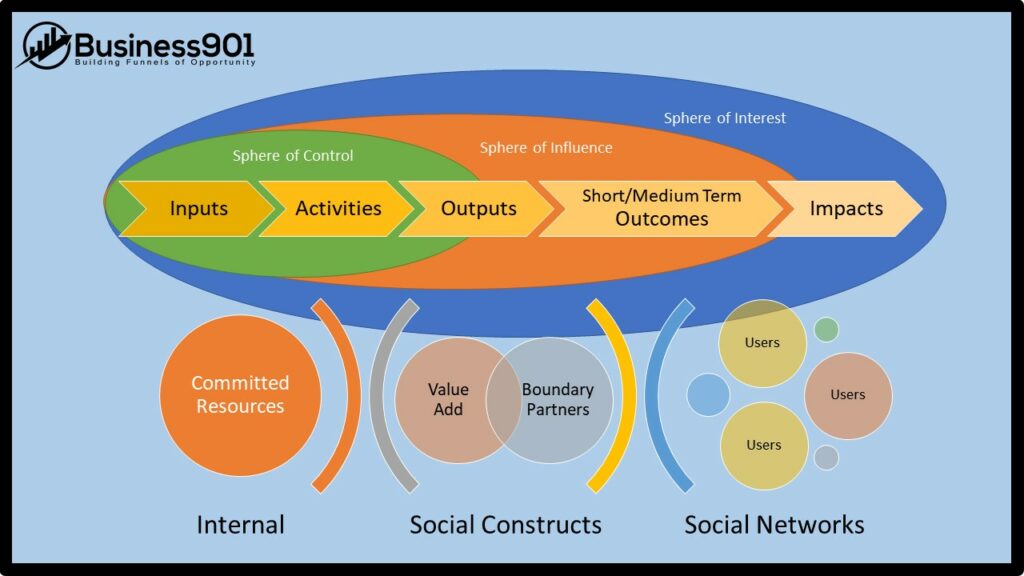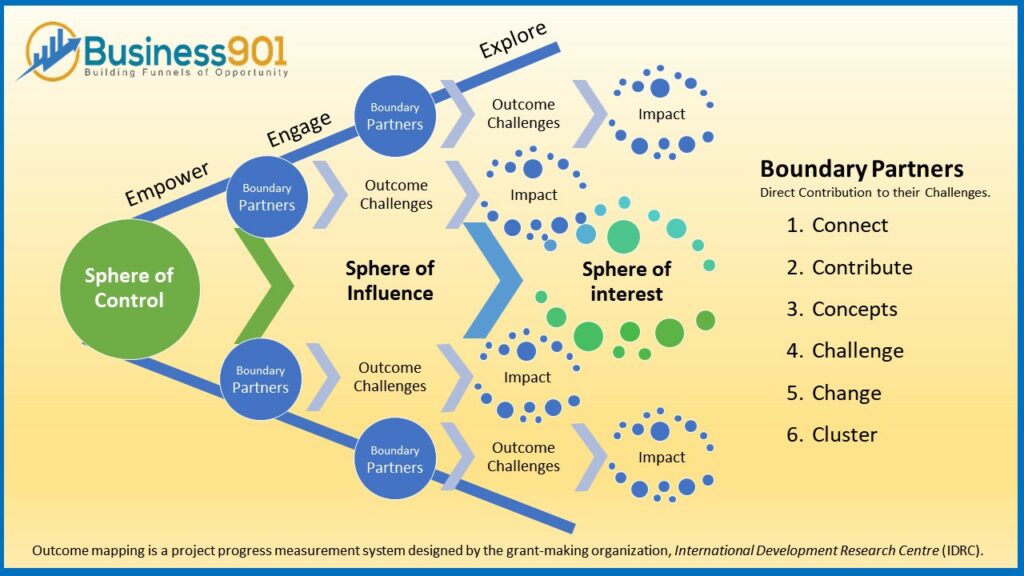This system style diagram is primarily derived from Outcome Mapping (OM) with a little Theory of Change (TOC) thinking. OM differs from TOC in that it focuses on Boundary Partners, an area that we can influence, evaluate, and adapt to the changes that incur. As we move to the right side of the diagram, we have less influence. However, this is where most of us spend our dollars or as I said above the top of the funnel. Why not on Social Constructs?
Organizations are also more networked with decision making becoming more decentralized. We are having a difficult time identifying and addressing all the influencers in the decision process. We ask our salespeople typically by themselves to manage this. However, how well is it understood by the rest of our supporting cast and supported?

This is compounded by the amount of noise and distractions in our marketing space or as I like to say at the top of the funnel. The result is we become more reliant on forming market relevancy with boundary partners made up of influencers and key customers.
Often when designing marketing activities & plans, we concentrate on impacts and market segment. Areas that we often have little if any control over. We have recently seen a shift away from this practice with more work taking place around the concept of outcomes. But the age-old questions still exist around focusing on the right people and organizations.
The Outcome Mapping Process focuses on what and more importantly whom an organization has the ability to influence. We use the term Boundary Partners as this expands the thought past key accounts and might also include other representatives and influencers.

From Wikipedia: Outcome mapping is a project progress measurement system that was designed by the grant-making organization, International Development Research Centre (IDRC). It differs from traditional metrics in that it does not focus on measuring deliverables and its effects on primary beneficiaries but on behavioral change exhibited by secondary beneficiaries. The outcome mapping process consists of a lengthy design phase followed by a cyclic record-keeping phase. Outcome mapping is intended primarily for charitable projects in developing countries funded by large donor organizations in developed countries.
Outcome Planning does not focus on traditional approaches such as problem solving, activity, process or vision. It focuses on the behaviors and what is important to your partners and customers. Rather than finding a product/market fit, we try to find a market/product fit.
I see a lot of talk about co-creation, open innovation, community, etc. but I see little in the way of programs on how we might create and improve on this type of relationship or cooperation. If anyone thinks managing a sales pipeline or a marketing funnel will create community, I believe needs to re-think their thoughts. Any type of manipulation, in the long run, will stunt any type of a co-created platform.
When we use the traditional thinking processes mentioned above, we view the customer being driven by our actions. We think of the customer in a static position and seldom address their evolving structure, and the unsettledness that are initiatives my create. We think of what they want to accomplish, mostly from a functional perspective. Do we ask questions that may be termed as Sensemaking? Questions like:
- In what ways can this decision be difficult?
- How much time and effort is made into making this decision?
- How do you assess the situation or broader context of the decision?
- What are you already doing well or current expertise that this decision affects?
As you can see, the flow of What’s and How’s versus the drilling down of Why? Why is for solution finding. What’s and How’s are for empathetic search and discovery. As we explore empathetically the Behavior, Attitudes, Conditions, Knowledge, and Status (BACKS) associated with people and the organization surfaces. In Outcome Planning, BACKS is what we measure and monitor.

